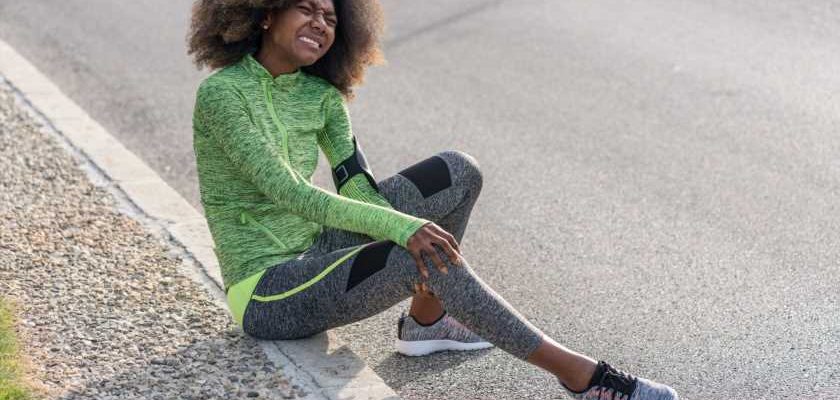The real reason why the start of every run can be so painful (even when you love running)
It doesn’t matter how experienced you are, the start of a run is always a painful experience, says Strong Women editor Miranda Larbi.
It doesn’t matter how long you’ve been running – the first 10 minutes of a run are bloody awful. You lace up with the intention of going on an easy canter and 500m in, your ankles feel like they’re going to explode and your lungs are crying.
Despite having run ultramarathons, each time I step out for a 30-minute jog I’m in agony. And it’s only until I’m quite far along my route that the pain starts to subside and I manage to find my groove – not ideal when you’re only planning to do 5K and you’re only able to breathe easy 3K in…
The question is: why does running often feel so painful early on, and why doesn’t that pain stop the more fit and experienced you get? I actually want to go running – I like running – so I know that it can’t be a mental block.
You may also like
12 running myths that every runner is sick of hearing
Graham McKenna, ultra-marathon coach at Start Running Stay Running agrees that early run pain is a “mostly physical” issue. While mentally, we might struggle with knowing what’s to come (if we’ve got a long run planned, for example), the physical side is more straightforward. “You ache as soon as you start if you haven’t warmed up.
“This is because your body is going from a sedentary state to more active; your breathing will have been shallower and your heart rate a lot lower than what is required for exercise.It takes time for your body to make these adaptations, but once settled, you will find you are in your groove and can continue happily.”
Guilty as charged. I don’t warm up, and that’s because I – like loads of other runners – tend to set off in a slow jog, and gradually ramp up the speed as the run goes on. That’s a technique come run coaches believe is more useful than, say, doing a couple of calf stretches. But McKenna suggests that at the start of a run, you want to be going seriously slow and probably much slower than you already are going.
Try to run much slower to begin with
The more experienced at running we get, the better able we are to modify how we train to reduce pain (at least where it’s avoidable). “As we get more experienced, we learn more about what our body needs,” he explains. “A great example would be taking the first five or 10 minutes of a run very slowly and easing into it as both your body warms up and your brain gets focused.”
Warm-up stretches still matter
He also does still advise warming up with a few running-specific drills before heading out. “A good warm-up beforehand will help alleviate the discomfort,” he says, going on to recommend trying A and B skips, and other dynamic stretches like lunges, high knees, heel kicks and side skips.
“While stretching cold muscles is a big no-no, dynamic stretches pre-workout can also help get the blood flowing.”
He also recommends using the first couple of miles purely thinking about running form. “This keeps that section of your run a little easier and ensures you are fully warmed up and ready to tackle your run.”
Try to think about your session as a run in three parts: part one is 1-2K where you’re going super, super slowly and concentrating in picking up your feet, keeping the body in alignment, relaxing the shoulders and looking forward. Part two is your main run section – getting in those miles, finding a comfortable pace to stick with. And then, if you can, aim to ramp up the speed for your last couple of kilometres so you can finish hard.
That last bit is important (although it doesn’t have to be at the end – I just find it easier to commit to pushing for the last five minutes than trying to gain speed mid-way through a run). Running fast doesn’t just create physiological adaptations – it can train your brain, too. According to Colorado-based running coach Laura Norris, during speed work, “you train your neuromuscular system to recruit fast-twitch muscles, which helps you become faster in the long term.”
The more you practice it, the better you’ll get at finishing fast and hopefully, getting used to that sprint finish will help you to feel more confident about gaining speed in any upcoming race.
Images: Getty
Source: Read Full Article
